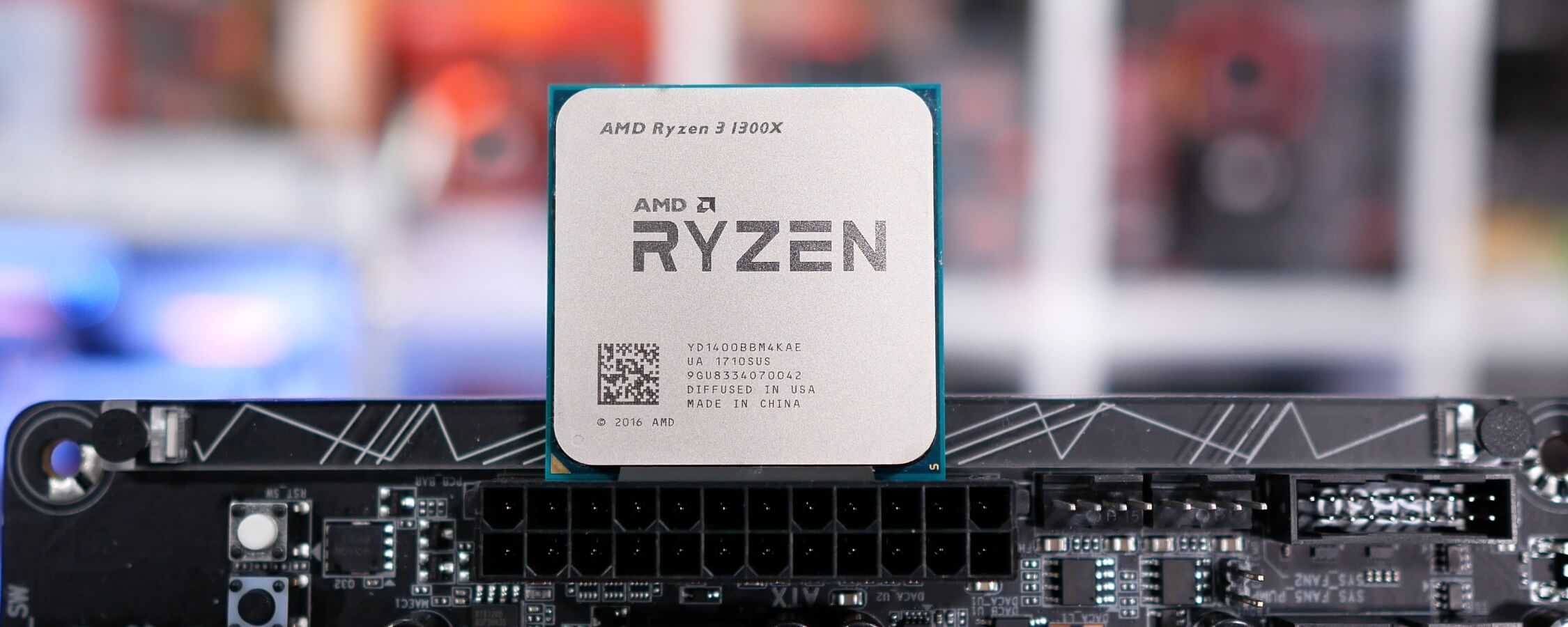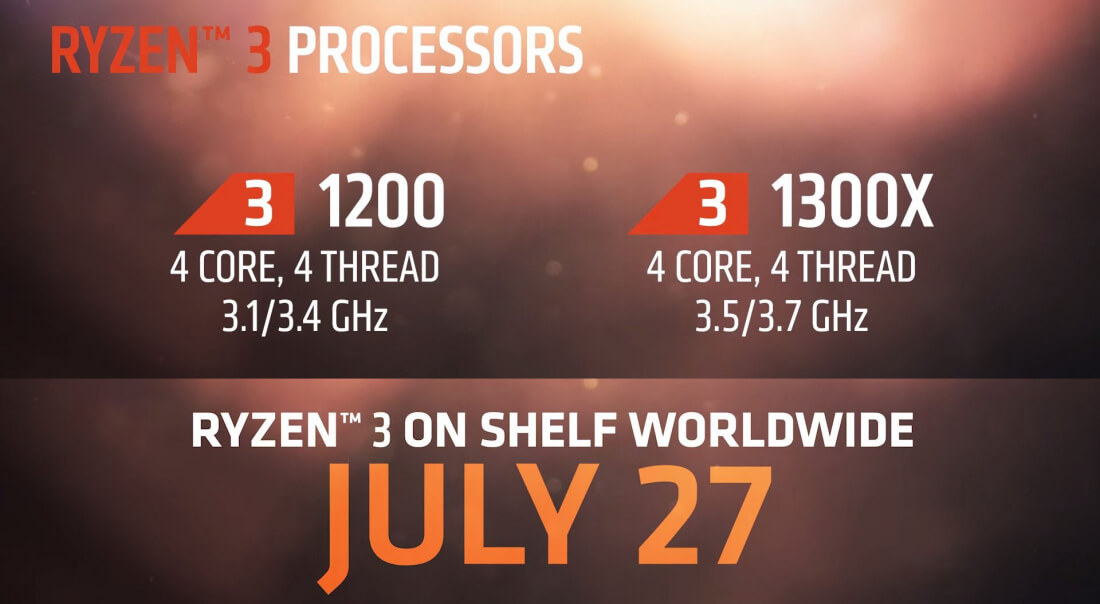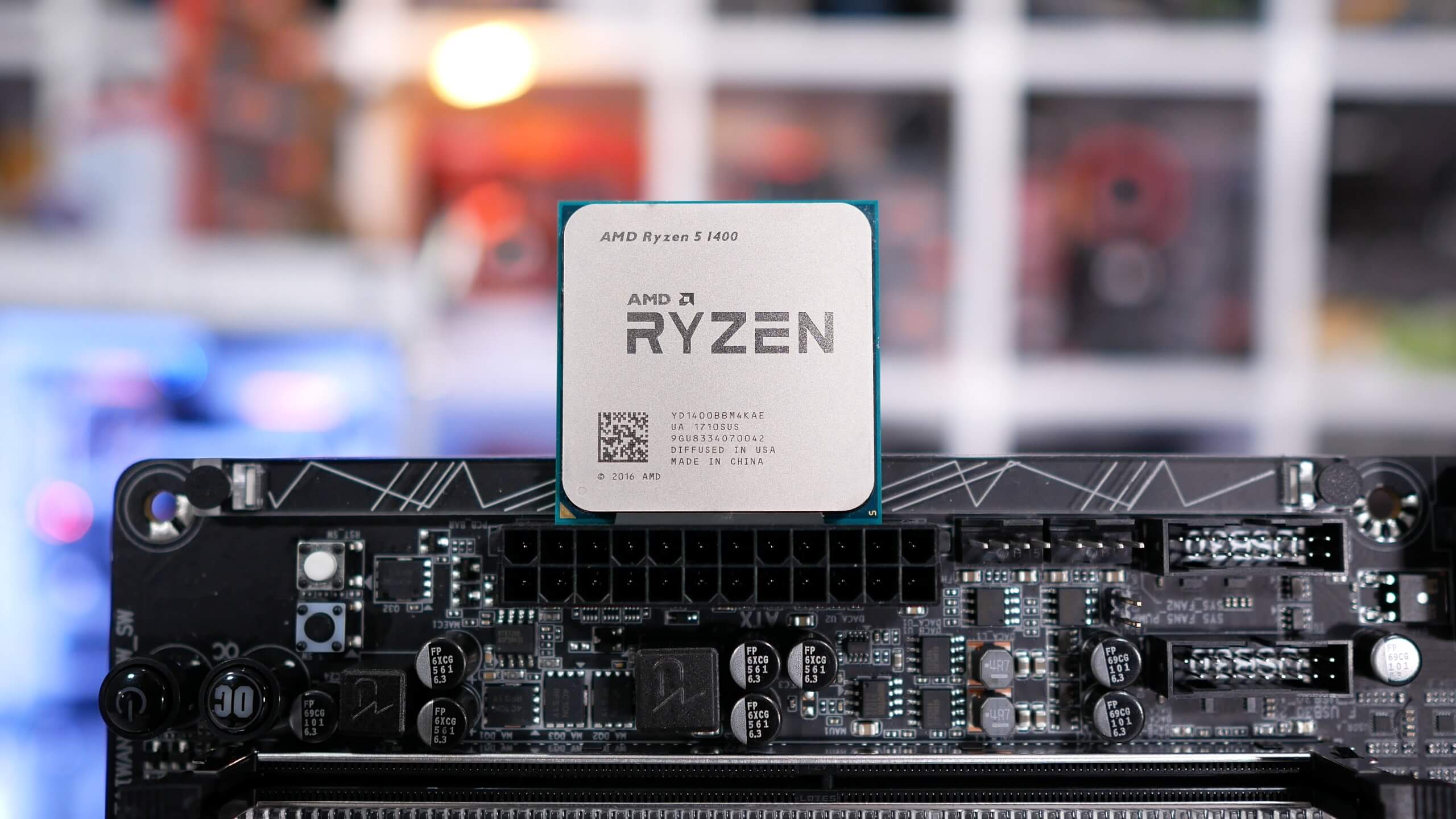Today we're taking a glimpse into the future to see how Ryzen 3 will perform when it's released next week. We did the same with Ryzen 5 and those results turned out to be 100% accurate, so now that Ryzen 3 specs are set in stone we can preview the chip's performance with a high degree of confidence.
This is because Ryzen 5 and Ryzen 3 are the same physical chips as Ryzen 7, just with a certain degree of resources disabled. In our previous Ryzen 5 simulation we explained this in a bit more detail, so we won't go over all that info again. In a nutshell, when an 8-core CPU fails the quality control check with one or more cores, the defective cores get shut off and the chip is binned as a lower-end part. This is a common and long-standing practice in semiconductor fabrication.
AMD has likely been holding off releasing Ryzen 3 until they have enough defective chips that can't be sold as higher-end Ryzen 5 models.
Ryzen 3 is very similar to the Ryzen 5 1400 with one key change, SMT support has been disabled. The 1400 has 4-cores and 8-threads, while the Ryzen 3 CPUs will have 4-cores and just 4-threads. Like the 1400 the Ryzen 3 1300X and 1200 will feature an 8MB L3 cache, support dual-channel DDR4-2666 memory and will be given a 65W TDP rating.
The Ryzen 3 1300X will operate at a base frequency of 3.5 GHz with a boost frequency of 3.7 GHz, while the slightly lower-end 1200 will operate at 3.1 GHz with a boost frequency of 3.4GHz. Both are unlocked parts, so for enthusiasts on a budget it makes little sense to opt for the more expensive 1300. The 1300X is suggested or rumored to be priced at $130, while the 1200 should come in at $110.
Saving $40 by purchasing the R3 1300X over the R5 1400 probably won't be worth it. But maybe the $60 saving offered by the R3 1200 will be enticing for a budget build. The question is how much slower does disabling SMT make the Ryzen 3 processors, and how do they compare with similarly priced Intel CPUs?
Actually comparing Ryzen 3 with equivalent Intel CPUs at these price points is a little tricky, because the Intel CPUs here make no sense whatsoever. As we've have touched on numerous times in the past, the $80 Pentium G4560 eliminates everything right up to the Core i5-7400.
That means everything priced below $180 on Intel's current lineup is pointless, ruling out the entire Kaby Lake Core i3 range, thus placing the Ryzen 3 CPUs in an awkward spot at $110 and $130.
That said, if they can take it to the locked Core i5 parts such as the 7400 and 7500 then they will have earned a comfortable position in the market segment. So let's see how the Ryzen 3 CPUs look as we take the Ryzen 5 1400, disable SMT, and adjust the base and boost clock speeds accordingly.
Synthetic & Application Benchmarks

Starting off I took a look at memory bandwidth performance just to make sure everything was in check here. As expected disabling SMT support has no impact on memory bandwidth and when paired with DDR4-2933 memory the Ryzen 3 processors should enjoy a bandwidth of 35 GB/s. Please note I opted for 2933 memory here opposed to 3200 for the simple fact that some of our lower end Ryzen 5 CPUs still have trouble running higher clocked memory, so I'm going to assume most Ryzen 3 CPUs will as well.
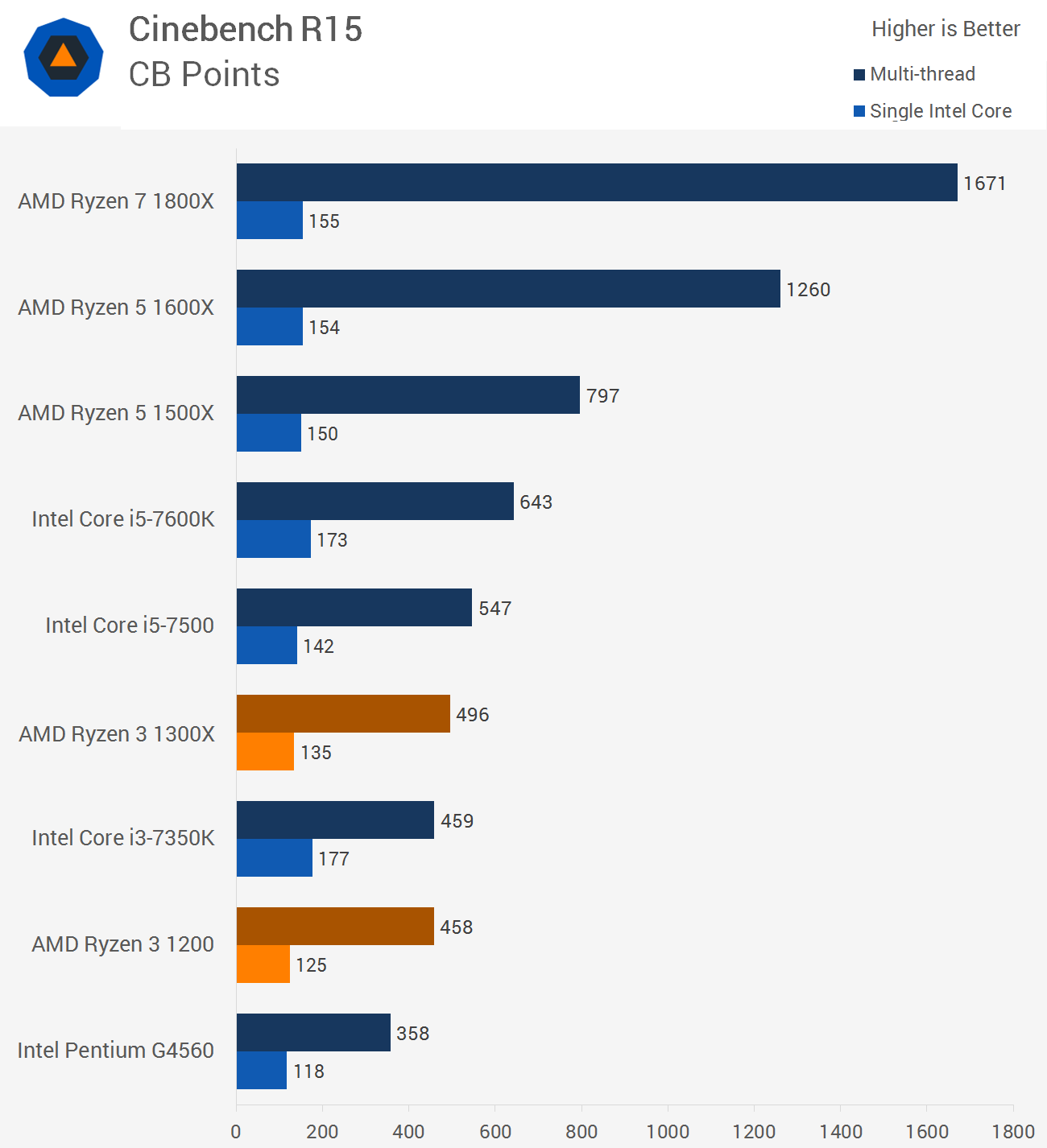
For measuring single and multithreaded rendering performance we have Cinebench R15 and here the Ryzen 3 processors stack up rather well. The single thread performance of the 1300X is just 5% down on the Core i5-7500 while multithreaded performance is 9% slower. That said keep in mind both the 1200 and 1300X will be fully unlocked so chances are with a little bit of tinkering you can put both well ahead of the i5-7500 in this test.

The four physical cores of the Ryzen 3 CPUs are able to match the two much higher clocked and Hyper-Threading supported Core i3-7350K cores in the 7-zip file manager benchmark. Again the R3 1300X wasn't much slower than the more expensive i5-7500 while both easily beat the Pentium G4560, though that is a much cheaper CPU.

Moving to the Excel workload I have to admit I was expecting the Ryzen 3 CPUs to perform much better here. Dropping SMT support along with the lower operating frequencies and reduction in L3 cache capacity has more than halved performance from the 1500X. They also come in well behind the i3-7350K and miles behind the i5-7500. The R3 1200 for example was only able to match the Pentium G4560 in its out of the box spec.
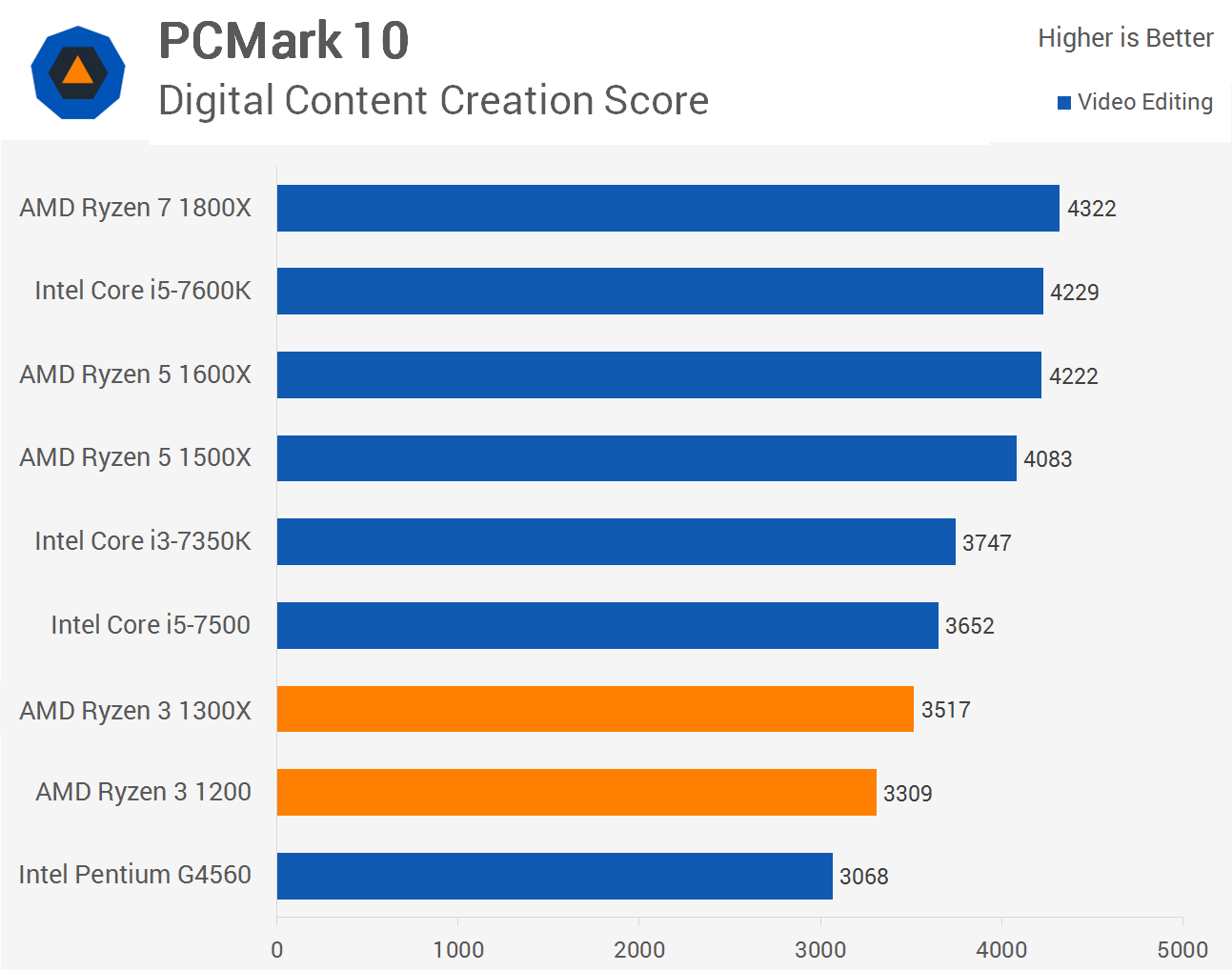
For general usage the Ryzen 3 CPUs should be comparable to the Pentium G4560 and Core i5-7400 and we are certainly seeing that here in the PCMark 10 essentials benchmark. The only issue here for the Ryzen 3 CPUs is the operating clock speed, overclock them a little and they will no doubt match the i5-7500.
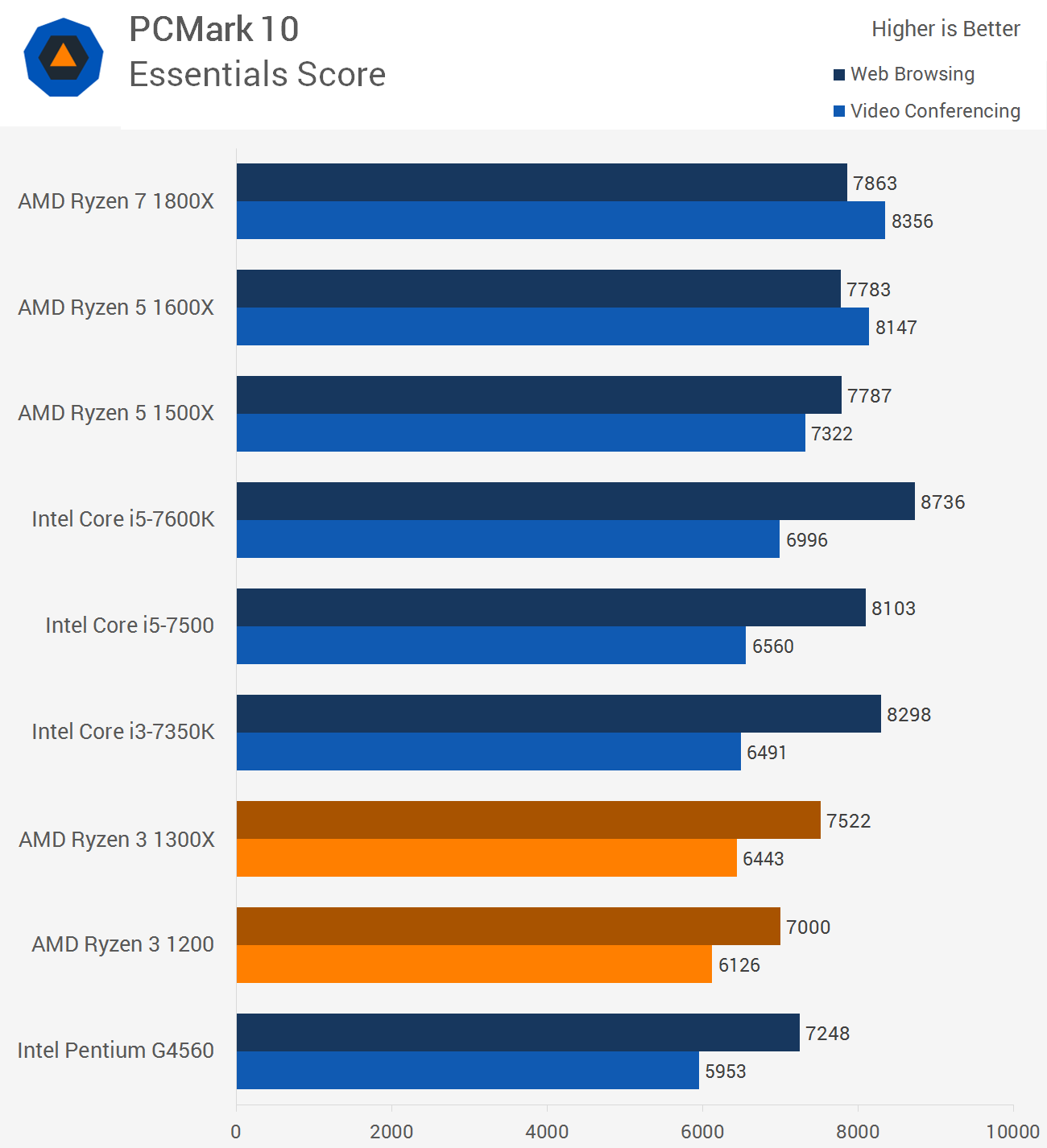
The productivity numbers are pretty much what we were expecting give the R5 1500X performance. Given the Core i3-7350K can be seen beating the Core i5-7500 in the spreadsheets test and almost matching it for the writing test, it's clear to say this benchmark favores single-thread performance.

The Ryzen 3 CPUs scored very well in the photo editing test, crushing the dual-core Intel CPUs while roughly matching the Core i5-7500. That said the rendering & visualization performance was lower than expected, here the R3 1300X roughly matched the i3-7350K.
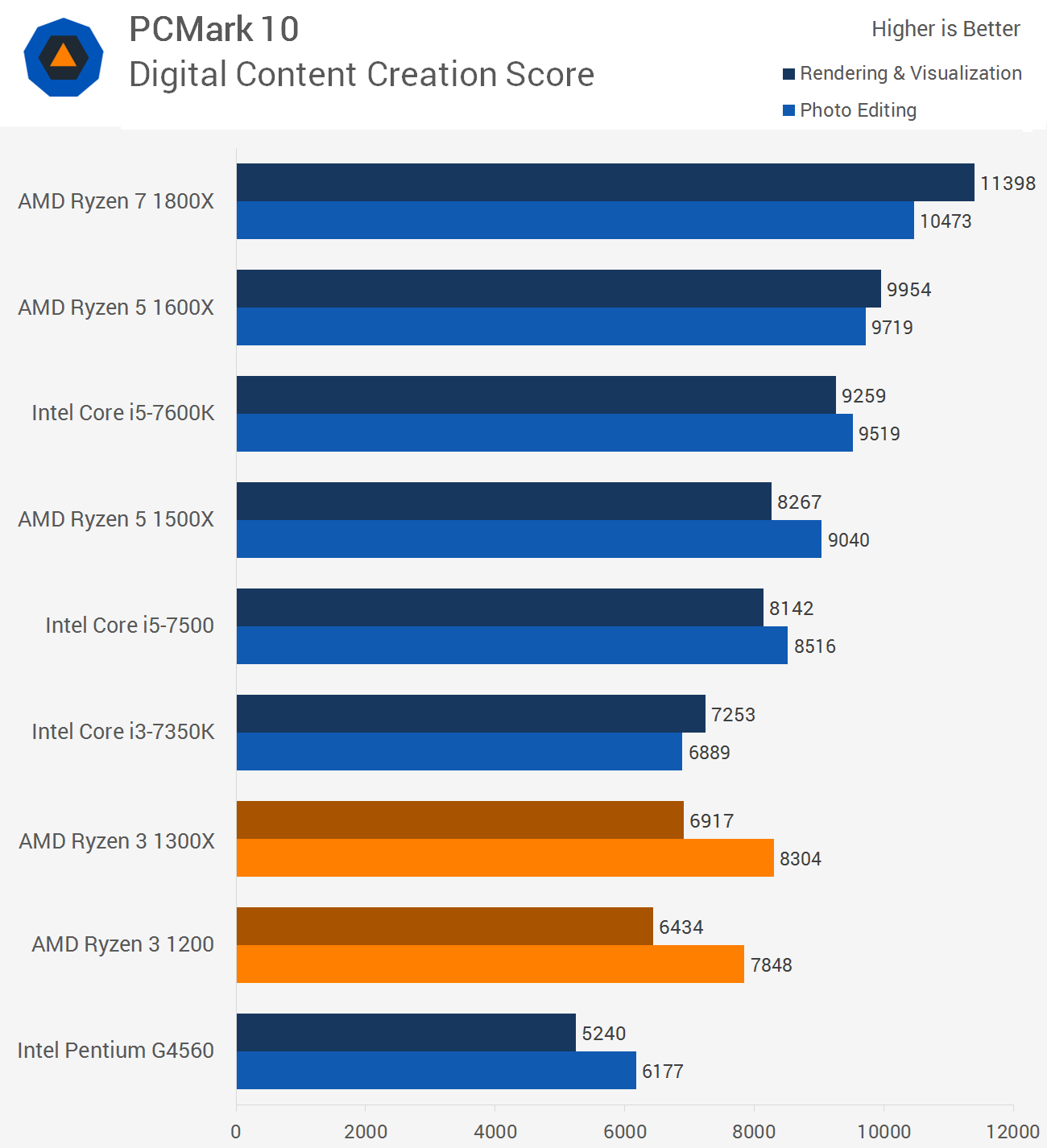
Then finally for video editing the Ryzen 3 processors find themselves situated between the Pentium G4560 and Core i5-7500, certainly not a bad result but again this test prefers clock speed over core count.
